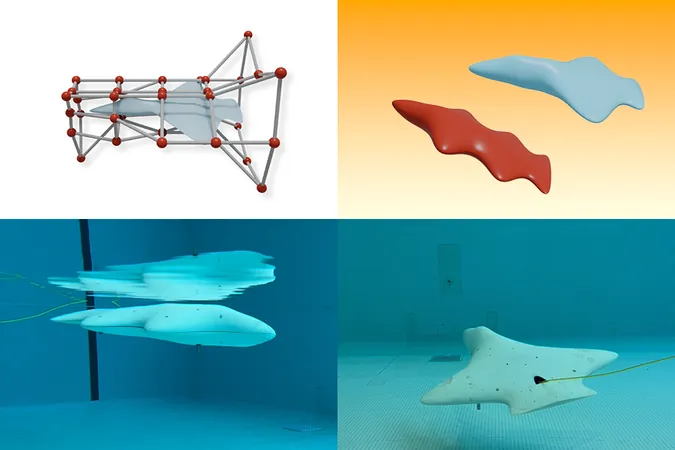
Revolutionizing Underwater Exploration: AI Unleashes Unique Autonomous Gliders
2025-07-09
Author: Nur
Marine scientists are fascinated by the astonishing efficiency of creatures like fish and seals, which glide through water with remarkable grace and minimal energy. Inspired by nature, autonomous underwater vehicles aim to mimic these incredible designs but often fall short, relying on conventional torpedo-like shapes. As a result, the quest for innovation in glider technology has seen limited success.
AI Steps in to Transform Design
A groundbreaking collaboration between MIT's Computer Science and Artificial Intelligence Laboratory (CSAIL) and the University of Wisconsin-Madison is changing the game. By leveraging artificial intelligence, researchers are unlocking fresh hydrodynamic designs that could revolutionize how we gather data on our oceans. The team uses machine learning in a physics simulator to explore diverse 3D shapes, paving the way for custom models that can be 3D printed with significantly less energy compared to traditional methods.
Innovative Gliders for Oceanographers
The potential applications of these novel designs are immense. Oceanographers could utilize newly crafted gliders to monitor essential data points like water temperature, salinity, and current patterns, even aiding in climate change research. The research team developed two prototypes—one resembling a sleek airplane and another evoking the form of a flatfish, each about the size of a boogie board.
Harnessing Nature's Inspirations
Peter Yichen Chen, a postdoctoral researcher at MIT, highlights how the newly designed shapes are just the tip of the iceberg. His novel approach facilitates the creation of unconventional designs, which traditional methods struggle to achieve. By harnessing 3D models of various marine creatures and human-made vehicles, they shaped new gliders using flexible 'deformation cages' that allowed for astonishing creativity in design.
AI-Powered Performance Optimization
But how do these AI-driven designs actually perform in the real world? The team utilized a neural network to predict how various glider designs could maneuver through underwater physics, optimizing for the all-important lift-to-drag ratio—crucial in determining how efficiently a glider can traverse the depths of the ocean.
Testing in Real Conditions
To validate their models, the researchers constructed a downsized version of the two-wing design, resembling a paper airplane, and tested it in MIT's Wright Brothers Wind Tunnel. Remarkably, their simulations predicted a lift-to-drag ratio that was only 5% higher than the actual measurements taken during wind tests.
Ready for the Deep Blue
The next challenge is to take these designs underwater. The team is now poised to test their most promising designs—one resembling a jet and another with four wings—at various angles of attack, marking a significant step in underwater exploration technology.
A Bright Future for Ocean Exploration
With this pioneering approach, not only could we witness more efficient gliders in our oceans, but also gain invaluable insights into marine ecosystems and climate dynamics. The marriage of AI and marine science has opened up exciting new avenues for exploration, pushing boundaries like never before.


 Brasil (PT)
Brasil (PT)
 Canada (EN)
Canada (EN)
 Chile (ES)
Chile (ES)
 Česko (CS)
Česko (CS)
 대한민국 (KO)
대한민국 (KO)
 España (ES)
España (ES)
 France (FR)
France (FR)
 Hong Kong (EN)
Hong Kong (EN)
 Italia (IT)
Italia (IT)
 日本 (JA)
日本 (JA)
 Magyarország (HU)
Magyarország (HU)
 Norge (NO)
Norge (NO)
 Polska (PL)
Polska (PL)
 Schweiz (DE)
Schweiz (DE)
 Singapore (EN)
Singapore (EN)
 Sverige (SV)
Sverige (SV)
 Suomi (FI)
Suomi (FI)
 Türkiye (TR)
Türkiye (TR)
 الإمارات العربية المتحدة (AR)
الإمارات العربية المتحدة (AR)